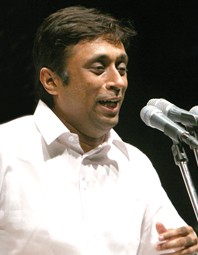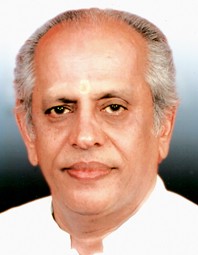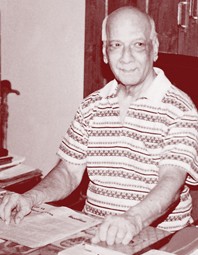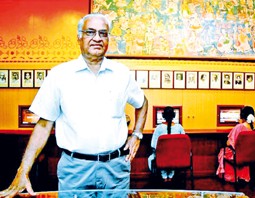COVER STORY - A musician of integrity by SAVITA NARASIMHAN

Sanjay Subrahmanyan. Soaring creativity, a powerful and robust style, a recalcitrant voice and a reclusive personality – these are the immediate associations that arise at the mention of this musician’s name. One of
the most established performing vocalists of our times, Sanjay has held his own in the field for well over two decades. He is one musician who has achieved an envious balance between two seemingly paradoxical elements, with a style that is as classical in content as it is unorthodox in execution.
Early years
Born on 21st January 1968, Sanjay belongs to a musical family with the redoubtable Rukmini Rajagopalan as his grandaunt. Rukmini Rajagopalan was a musician of repute with the benefit of training from Parur Sundaram Iyer and learning Papanasam Sivan’s compositions directly from the great composer. She was an approved artist of AIR since its inception in the 1930s, and a performer and teacher of note.
Some of Sanjay’s childhood years were spent in Calcutta, where his father was posted and his grandparents lived. The family then relocated to Chennai. His uncle Suresh Subrahmanyan observes that Sanjay “was playful and lively like other children of his age, and very bright and quick on the uptake. Even while barely two years old, he could recite sloka-s in Sanskrit with clarity. While there were no marked musical proclivities then, he did show an interest in the art form.” He was first sent to learn the violin from V. Lakshminarayana, at the age of seven. There was also a general family opinion that Sanjay was sent to violin classes as his voice was not considered suitable for vocal music. A bicycle accident and a broken wrist later, he took up vocal music. Thereafter, his grandaunt, Rukmini Rajagopalan shepherded and nurtured him. He later came under the dynamic guidance of the renowned musician-teacher Calcutta K.S. Krishnamurthi, who stoked Sanjay’s creative urges and groomed him to become the kind of free spirited performer he is today
SAVAL-JAVAB - A man for all seasons by ANJANA ANAND

Prof. A. Janardhanan spent 47 years at Kalakshetra, first as an outstanding student, then as principal dancer of Kalakshetra, and faculty member. He then went on to become the Principal of the Rukmini Devi College of Fine Arts at Kalakshetra and finally retired as Professor Emeritus at the age of 62. After a hiatus, he was invited back to his alma mater to revive some of its older dance-dramas in July this year. Guru Janardhanan is being honoured by Natyarangam (the dance wing of the Narada Gana Sabha) on 19 August on the inaugural day of its week-long thematic festival titled ‘Baandhava Bharatham’.
Early years
Although my father T.K. Chandu Panickar was a great performer of Kathakali, I did not receive any training from him in the early years. He was vehemently opposed to his children becoming Kathakali performers because of the hardships he faced in the profession. So we grew up without any exposure to the art form, though in those days he travelled extensively with the troupe. In fact in my growing years, I did not even see a Kathakali performance. I was quite scared of my father, who was rather strict.
Chandu Panickar’s style
He came from the Kalladikodan sampradaya, which emphasises abhinaya and angasuddham. He conveyed the depth of his abhinaya through his body, not just his face. In his style, the beauty of body movements that you saw during practice sessions came through with equal intensity on stage in the Kathakali costumes. There was no compromise in the body technique because of the heavy aharya. That perfection was his strength. For him it was art for art’s sake – even family came last. He followed his guru’s sampradaya completely. He was a compleat artist who knew all the stories by heart. He lived with complete discipline and adherence to angasuddham, which he maintained even when he performed at the age of 88.
MY GURU - The singing doctor by JAYALAKSHMI SEKHAR

From April 1978 to November 1994, I listened to Dr. Pinakapani’s voice over and over again – thanks to my husband T.V. Sekhar, who introduced me to the music he had recorded during his visits to Kurnool. I started visiting Dr. Sripada Pinakapani together with Sekhar from 1979 onwards.
My earlier guru-s were my father C.S. Krishnaswamy who introduced me to music, and Pudukottai Jayarama Iyer who taught me so much about the veena for about ten years. By attending several concerts of such stalwarts as Semmangudi Srinivasa Iyer, K.V. Narayanaswamy, Voleti Venkateswarulu, Nedunuri Krishnamurthy, Nookala Chinna Sathyanarayana, D.K. Jayaraman and Lalgudi Jayaraman, I was able to understand what great, traditional classical music sounded like and moulded my musical thoughts, though they took their final shape under the tutelage of Dr. Pinakapani.
Later on when Lalgudi Sir taught me his compositions – he sang and I learnt to play them on the veena – he was full of praise for the doctor. He expressed great respect for him as a musician.
SPOTLIGHT - Archiving music is his mission by AKHILA KRISHNAMURTHY

R.T. Chari – known in Chennai’s music and heritage circles as connoisseur, crusader, activist, and organiser – is also a storyteller. The exactness of detail with which he narrates stories from his own life is, in a sense, reflective of his characteristic meticulousness; in the Carnatic music orbit of Chennai, Chari has not only sown, cultivated and catalogued a huge collection of classical music but also created and fostered a classical consciousness of sorts.
On a warm night in the summer of 1975, Chari was hosting dinner for his two brothers-in-law – both musicologists – and their wives. The women were in the kitchen and the men sat in the living room, waiting for dinner. “I still remember vividly,” Chari recounts, sitting in the exact same room in his independent house off T.T.K. Road, nearly 37 years later, “the conversation was centred around Carnatic music.”
Chari was born into a family of nine children, and was, surprisingly the only one who didn’t develop an ear and aptitude for classical music. “I tripped on Tamil and Hindi film music and popular English songs instead,” he says, “The Binaca Geet Mala every Wednesday was really my staple.”


